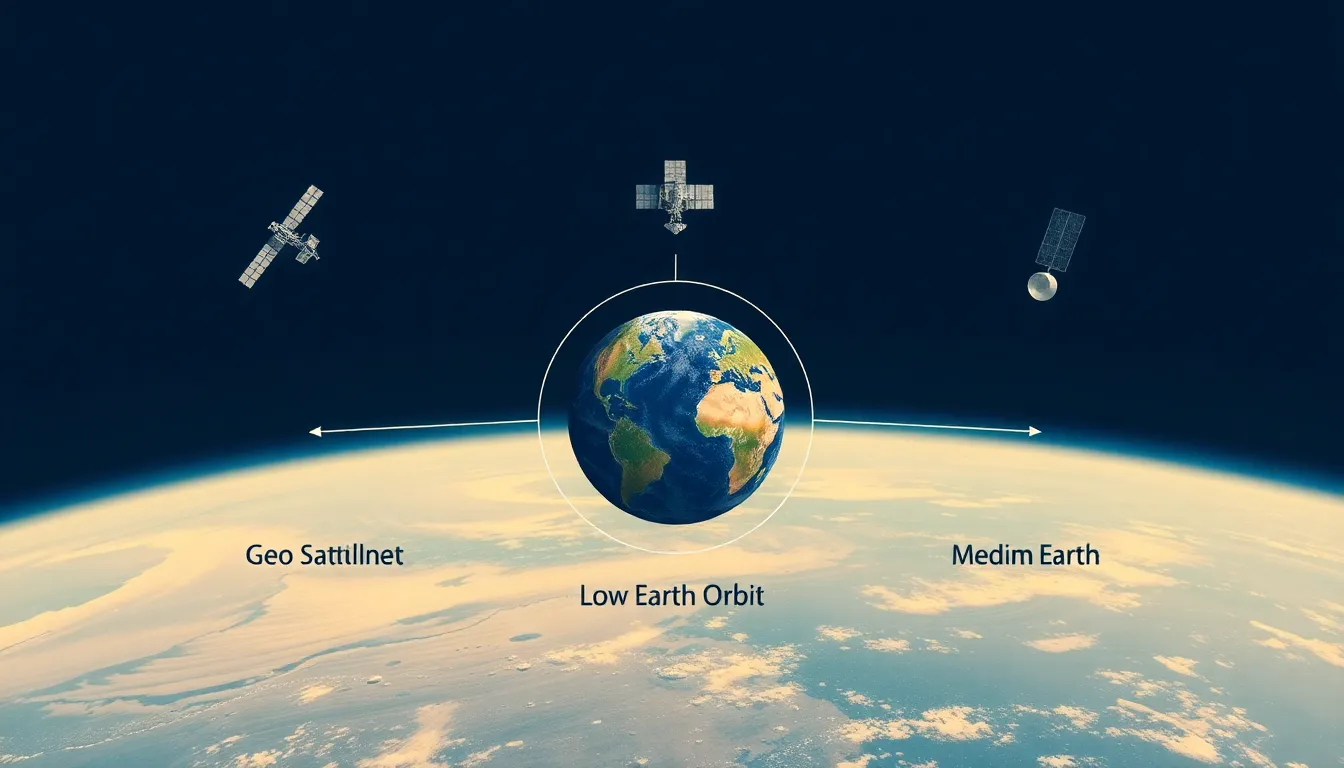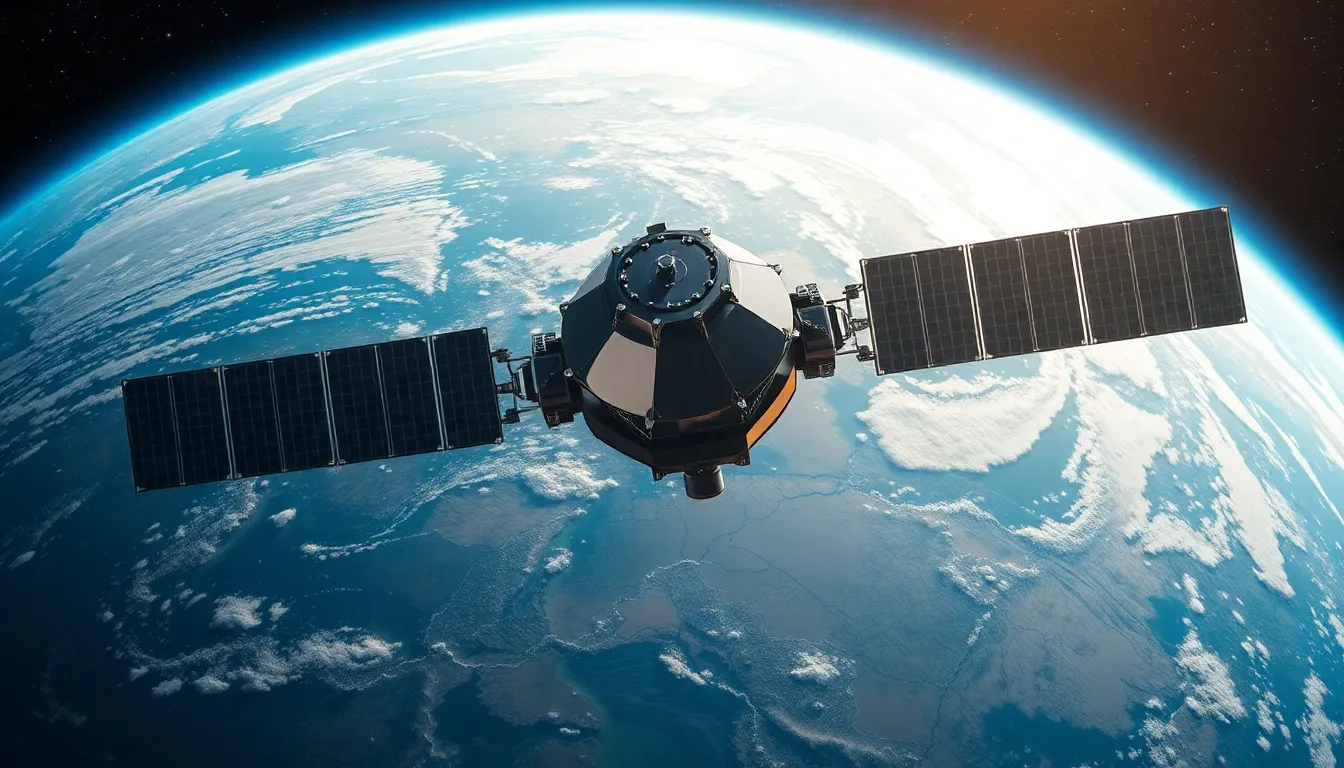In a world where scrolling through social media is as essential as breathing, satellite communications play a vital role in keeping everyone connected. Imagine a giant metal Frisbee orbiting the Earth, beaming signals faster than a caffeinated squirrel. That’s the magic of satellite technology, making it possible for people to chat, stream, and share from the most remote corners of the globe.
Table of Contents
ToggleOverview Of Satellite Communications
Satellite communications play a vital role in connecting users across the globe. This technology enables communication via satellites orbiting Earth, facilitating instant connectivity for various applications. Users experience enhanced capabilities for voice, data, and video transmission, even in remote areas lacking terrestrial infrastructure.
Multiple types of satellites exist, including geostationary, low Earth orbit, and medium Earth orbit satellites. Geostationary satellites remain fixed in one position relative to the Earth, ensuring consistent coverage over specific regions. Conversely, low Earth orbit satellites move rapidly, providing coverage in multiple areas through a networked system.
The benefits of satellite communications encompass several key factors. First, users achieve global coverage, allowing access from virtually any location on Earth. Second, it delivers high-speed connectivity, enabling seamless streaming and real-time communication. Applications in various sectors, such as telemedicine, disaster recovery, and mobile connectivity, demonstrate the versatility of this technology.
Challenges persist within the satellite communications field. Latency remains an issue, particularly with geostationary satellites, which may delay data transmission. Additionally, costs for launching and maintaining satellites can be significant, impacting the overall accessibility of the technology.
Regulatory frameworks also influence satellite operations. International agreements dictate frequency use, satellite positioning, and licensing requirements, ensuring efficient spectrum management. Advancements in technology promise to address existing challenges, improving efficiency and expanding global reach.
Types Of Satellite Communications

Satellite communications encompass several types. Each satellite type plays a unique role in delivering connectivity.
Geostationary Satellites
Geostationary satellites orbit at approximately 22,236 miles above Earth’s equator. These satellites maintain a fixed position relative to the planet, providing consistent coverage to specific regions. With their high altitude, they serve large areas, making them suitable for television broadcasting, weather monitoring, and emergency communications. Latency remains an issue; however, these satellites efficiently support applications requiring stable connections. One example includes the popular Intelsat series.
Low Earth Orbit Satellites
Low Earth orbit satellites operate at altitudes ranging from 100 to 1,200 miles above the Earth. This proximity enables lower latency compared to geostationary satellites, facilitating real-time communications. The satellite constellation structure provides enhanced global coverage. Companies like SpaceX with its Starlink project are prominent examples, targeting internet connectivity for remote areas. These satellites also enable applications in agriculture and environmental monitoring.
Medium Earth Orbit Satellites
Medium Earth orbit satellites function at altitudes between 1,200 and 22,236 miles. This range balances coverage and latency, making them ideal for specific use cases. Navigation and positioning systems, like the Global Navigation Satellite System (GNSS), utilize these satellites to provide precise location data. The spacing of these satellites ensures improved signal quality and reliability in various applications, including defense and aviation navigation.
Advantages Of Satellite Communications
Satellite communications offer several significant advantages that enhance global connectivity and service reliability.
Global Coverage
Global coverage stands out as a primary benefit of satellite communications. With satellites positioned in different orbits, users gain access to services in remote and underserved areas. Geostationary satellites provide extensive coverage, making them suitable for broadcasting and emergency communications across continents. Low Earth orbit satellites excel in delivering internet connectivity in even the most isolated regions. The combination of different satellites ensures persistent service availability worldwide. This broad reach empowers industries like agriculture and disaster response by enabling timely information sharing.
High Reliability
High reliability characterizes satellite communications, making them essential for critical applications. Satellites maintain consistent service even during adverse weather conditions, ensuring uninterrupted connectivity. The infrastructure is generally less prone to disruptions compared to terrestrial networks, which can suffer from outages due to natural disasters. Satellite systems allow for robust communications in emergency situations, aiding first responders and facilitating coordination efforts. Users experience dependable service through redundant satellite systems that enhance overall resilience and performance.
Challenges In Satellite Communications
Satellite communications face several challenges that can affect performance and service quality. Key issues include signal latency and environmental factors that disrupt communication.
Signal Latency
Signal latency represents a significant challenge in satellite communications. Geostationary satellites, positioned far above the Earth, introduce delays between signal transmission and reception. Average latency for these satellites ranges from 500 milliseconds to 600 milliseconds, creating delays that impact real-time applications like video calls and online gaming. Conversely, low Earth orbit satellites minimize latency, achieving levels around 20 milliseconds to 40 milliseconds. Despite advancements, geostationary satellites still struggle to support interactive services effectively, resulting in a need for improved technology in latency management.
Environmental Factors
Environmental factors play a crucial role in satellite communication effectiveness. Rain, snow, fog, and atmospheric conditions can degrade signal quality, leading to disruptions. Rain attenuation affects higher-frequency signals more than lower-frequency ones, causing a loss of connectivity during severe weather events. Increased path loss can result in higher operational costs and reduced reliability. Antennas and infrastructure must adapt to withstand these challenges, ensuring robust service even in adverse conditions. Climate variations further complicate satellite operations, emphasizing the necessity of resilient technology and infrastructure in the field.
Future Trends In Satellite Communications
Emerging trends in satellite communications underscore significant advancements and service opportunities poised to reshape the industry.
Advancements In Technology
Recent innovations enhance satellite capabilities. New developments in satellite design, such as miniaturization and improved propulsion systems, increase efficiency. Integration of artificial intelligence for network management optimizes resource allocation, enhancing performance. Additionally, advancements in materials science contribute to stronger and lighter satellites, facilitating deployment in diverse orbits. These technological strides enable networks to achieve faster data transfer rates while reducing latency. Companies exploring these cutting-edge solutions significantly strengthen global connectivity.
Expansion Of Services
Diverse applications emerge as satellite communications expand. Growing demand for high-speed internet drives the launch of large constellations of low Earth orbit satellites. Industries such as agriculture, telemedicine, and smart cities benefit from enhanced connectivity and data solutions. Partnerships between private companies and governments catalyze this expansion, allowing for improved service in rural and underserved areas. Environmental monitoring and disaster response utilize satellite capabilities effectively, showcasing adaptability. These trends indicate a bright future for comprehensive service reach in satellite communications.
Satellite communications are reshaping how people connect and share information across the globe. With advancements in technology and the rise of low Earth orbit satellites, the industry is poised for significant growth. This evolution not only enhances connectivity in remote areas but also supports critical sectors like telemedicine and disaster recovery.
As the demand for high-speed internet continues to rise, innovations in satellite technology will likely address existing challenges such as latency and environmental interference. The future of satellite communications looks promising with ongoing developments and partnerships that aim to expand access and improve service reliability. Embracing these changes will empower industries and individuals alike to thrive in an increasingly interconnected world.







